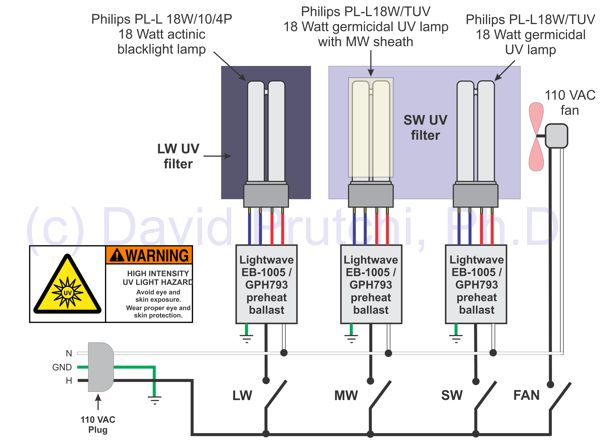
I just posted a new whitepaper with a short primer on UV Fluorescence Photography and a diy 18W, 3-wavelength, professional-grade lamp.

The figure above shows pictures of Hackmanite from Bancroft, Ontario, Canada taken using this diy lamp: a) White light photograph; b) reflected near-UV with Baader-U and long-wave illumination; c) fluorescence with wideband (LW, MW and SW) excitation; d) long-wave UV excitation; e) fluorescence with mid-wave UV excitation; f) fluorescence with short-wave UV excitation.
The whitepaper is available at: http://uvirimaging.c…ce-photography/





 Andrew Gliesman sent me these pictures of his DOLPi Visor replication along with a very kind note.
Andrew Gliesman sent me these pictures of his DOLPi Visor replication along with a very kind note.






